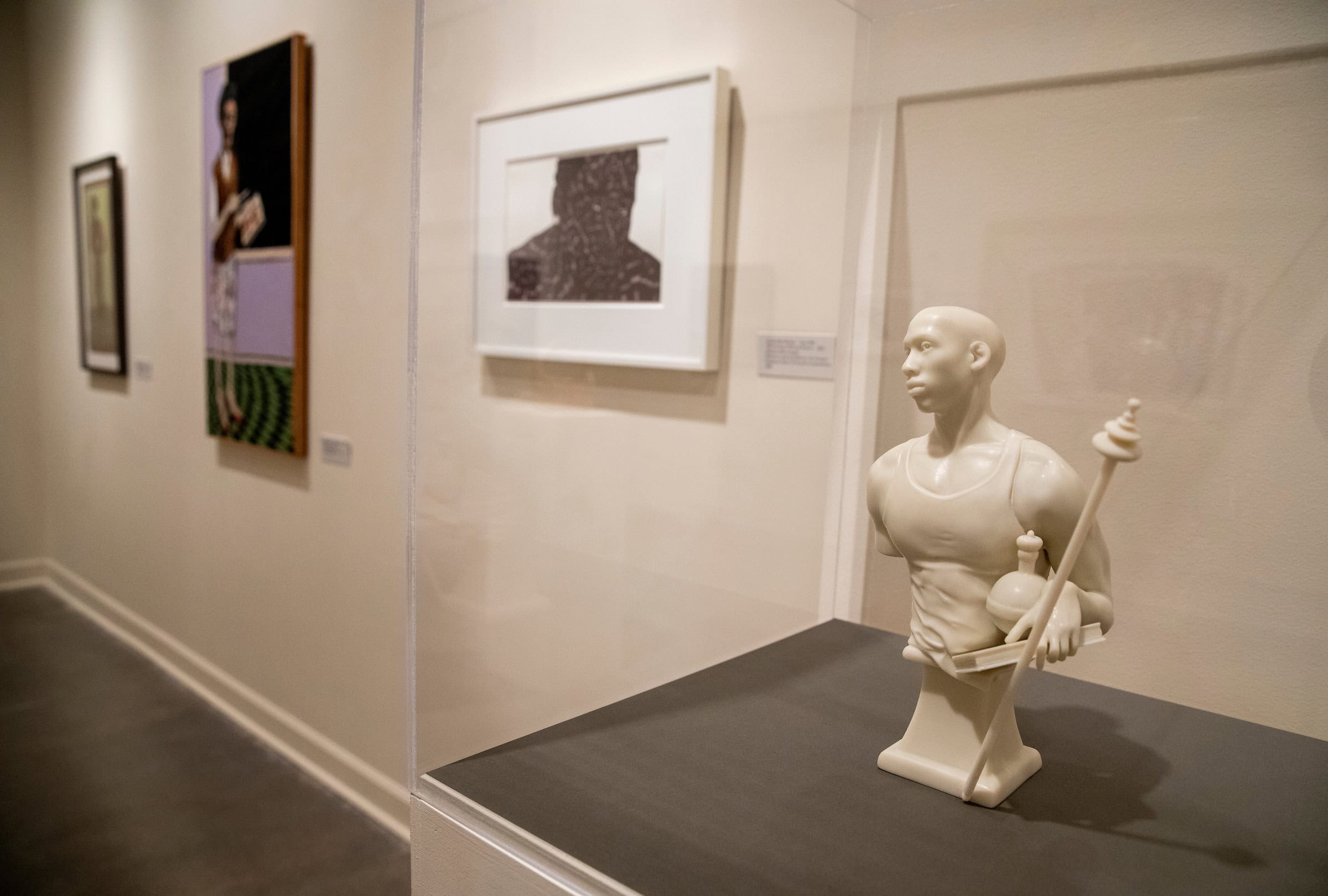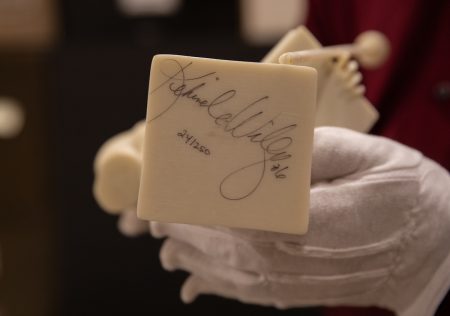Kehinde Wiley sculpture featured in Maier’s latest exhibit

Kehinde Wiley’s “St. Francis of Adelaide” was acquired by the College in 2020 and is the centerpiece of the Maier Museum of Art’s latest exhibit, “Saints and Sin: Selections from the Permanent Collection by Black Artists.”
The tabletop-size sculpture, made of cast marble and resin, is reminiscent of the kinds of portrait busts that would have been commissioned by clergy or other wealthy folks in 18th century Western Europe.
But St. Francis of Adelaide instead depicts a young Black man, standing proudly while holding a book, orb, and scepter.
The piece is representative of the themes its artist, Kehinde Wiley, is best known for—portraying individuals of African descent in positions of power by referencing western art, according to Randolph art history professor Lesley Shipley.

Kehinde Wiley’s “St. Francis of Adelaide”
“By placing a youthful black man in the guise of a Christian saint, Wiley creates a counternarrative of beauty, humanity, and strength that challenges racist stereotypes of the black male,” Shipley said in a Facebook video describing the sculpture.
St. Francis is a recent acquisition of the College and the centerpiece of the Maier’s latest exhibit, Saints and Sin: Selections from the Permanent Collection by Black Artists.
“I was really inspired by the amplification of the Black Lives Matter movement that happened during the summer,” said Maier Director Martha Johnson. “I felt like we should do something in response to what’s happening. It’s important to show our solidarity in a really tangible way.”
The exhibition title refers to the sin of systematic racism, while the saints are a reference to both Wiley’s sculpture and other pieces from the collection that Johnson said suggest an innocence. Those include a Lou Draper photograph of a young African-American student writing on a chalkboard and Vanessa Brantley-Newton’s whimsical mixed media piece Brown Princess No. 2, which depicts a smiling girl wearing a crown.

Vanessa Brantley-Newton’s “Brown Princess No. 2”
“It’s so optimistic and hopeful and innocent,” Johnson said. “Almost saintly in a way.”
Other pieces, by well-known artists like Carrie Mae Weems and Betye and Allison Saar, deal with racism very directly.
Randolph owns four photographs from Weems’s series From Here I Saw What Happened and I Cried, for which she painted over photographs of slaves taken in 1850 to document scientific research aimed at proving differences among human beings.
Betye Saar’s show-stopping Nevermore is a mixed-media collage featuring a black lace mourning dress affixed to paper that’s cut in the shape of a tombstone, two ravens clutching the dress’s shoulders.
What appears to be a swath of white lace detailing in the center of the dress is, upon closer inspection, revealed to be a birds-eye view of a slave ship — “rows of black bodies in a supine position and an illustrated plan for slave stowage on the infamous slaver, the Brookes,” according to information released when the College acquired the piece in 2012.
Johnson said both acquisitions really marked a turning point for Randolph and its dedication to collecting work by artists of color.
Adding Wiley to that list is certainly a coup. Until last year, he was probably best known for creating a 2018 portrait of President Barack Obama for the National Portrait Gallery.
Then, in 2019, he unveiled the iconic Rumors of War in Times Square before it moved to its permanent home in Richmond. Commissioned by the Virginia Museum of Fine Arts, the bronze statue stands tall on Monument Avenue, featuring a young African-American man in a heroic pose atop a horse—a response to the city’s Confederate statues.
St. Francis, created in 2016, is an example of his early sculptural work.
“Students taking courses in the studio art, art history, and museum and heritage studies programs at Randolph often take field trips to Richmond to visit the VMFA and Monument Avenue,” Shipley said. “Our students now will have the opportunity to study one of Wiley’s sculptural works up-close at the Maier.”
***
Saints and Sin: Selections from the Permanent Collection by Black Artists is currently on display at the Maier Museum of Art at Randolph College, through April 1, 2021. The Maier is open from 1 to 5 p.m. Wednesday to Sunday, with social distancing measures in place. The number of people allowed inside at one time will be limited, and the staff is following strict protocols for cleaning and safety. Masks are required—or provided if you forget yours. For more information, visit maiermuseum.org.
Tags: art, art history, exhibitions, Kehinde Wiley, Lesley Shipley, Maier Museum of Art at Randolph College, Saint Francis of Adelaide
